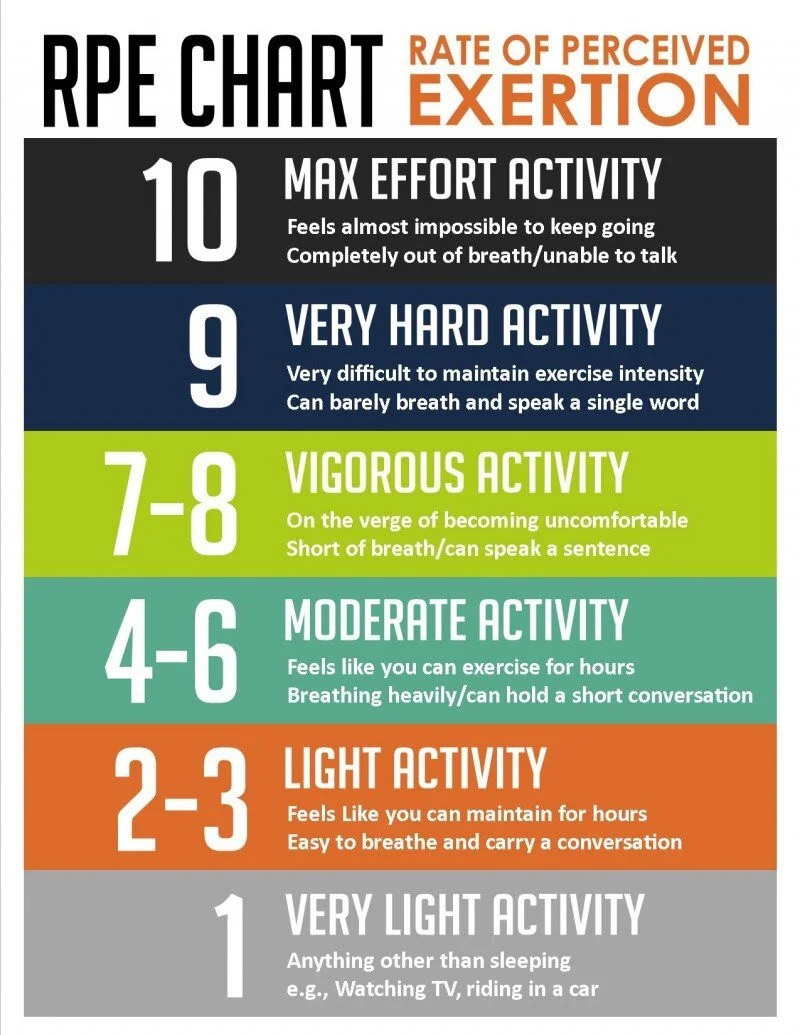
RPE
Rate of Perceived exertion
DEFINITION
Rating of Perceived Exertion (RPE) is a tool we use to measure training intensity from the perspective of the athlete. We use RPE as a way for you to subjectively assess how hard you’re working in a particular set of an exercise.
RPE is a range from 1 to 10, with 10 being the most difficult and 1 being the easiest. For strength training, we anchor these numbers to many more reps you think you could have done.
RPE for strength training
The chart below outlines what 1-10 means for RPE when strength training.
Example exercise
Your coach assigned barbell deadlifts, 8 reps at RPE 6.
For your last warm-up set you lifted 125# for 8 reps, and felt you could have done 5 more — that’s RPE 5. For RPE 6, you estimate that 135# will be appropriate.
After a rest, you lift 135# for 8 reps, and feel you could have done only 3 more reps. No fear, sometimes we estimate wrong! Just log RPE 7 for that lift. Next time you deadlift, you can use this information to better estimate what weight you should choose.
Why do we use RPE?
RPE is a form of auto-regulation— it lets us account for the days we feel “off”, or the days we feel really strong!
Instead of programming a specific weight, programming RPE allows you to prevent injury on bad days (why would you try to match your normal weight right after recovering from a cold?) and hit a PR on good days (your regular weight felt too easy? Time to increase!).
RPE for Climbing or Cardio
We can also use RPE to track how intense a workout or a climbing session is, outlined in the chart below.

